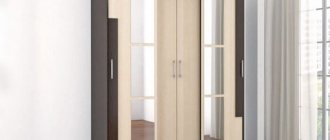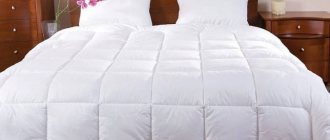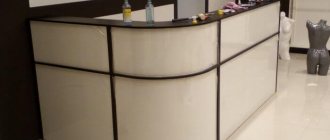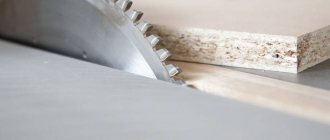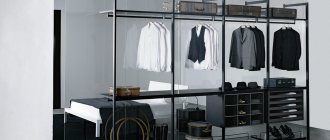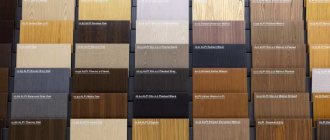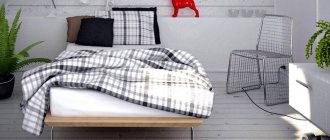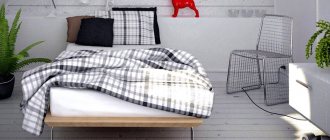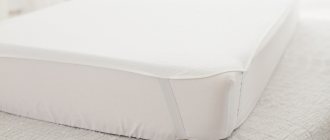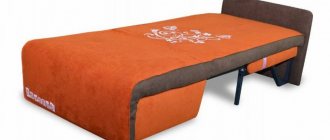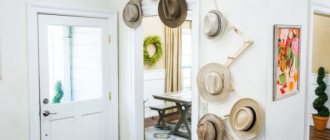Every person in his life has done renovations to his apartment at least once. Today, a wide range of building materials is constantly being improved and is already able to satisfy the needs of any consumer.
Nowadays, chipboard and laminated chipboard are most often used in construction and repair. But before starting work, it is necessary to find out how these building materials differ, which ones have advantages and disadvantages, and also become familiar with the main characteristics of the materials: sheet size of laminated chipboard and chipboard, strength, resistance to moisture, fungus, loads, etc.
What are chipboard and laminated chipboard
Chipboard is a composite material widely used in construction and furniture production. The boards are made from sawdust, which is put through a hot press and then impregnated with various additives and formaldehyde resins.
The surface of the slab becomes rough and porous. To protect the surface from moisture and give it an aesthetic appearance, the slabs are lined with veneer, paper, plastic and other materials.
Chipboards are classified according to the level of processing:
- polished (untreated);
- unpolished (processed);
- laminated;
- veneered;
- laminated.
Laminated chipboard is a board made of wood chips, which is treated with a laminated melamine film (laminated).
Advantages of laminated chipboard
Laminated chipboards have many advantages over chipboards. The main advantage of laminated chipboard is the protective melamine film.
Other advantages of laminated boards:
- strength (thanks to an additional layer - lamination);
- resistance to fungus and other types of bacteria;
- resistance to mechanical damage;
- emit less formaldehyde, a poisonous gas;
- aesthetically attractive appearance;
- variety of colors;
- heat resistance and ease of processing;
- do not require further processing or painting;
- in case of damage they are easily restored;
- high coefficient of heat and sound insulation;
- high wear resistance;
- low cost.
The beautiful appearance of laminated chipboards allows them to be used in the manufacture of furniture products, and the high parameters of heat and sound insulation make laminated chipboard an indispensable material in construction.
Flaws
Laminated chipboards are actively used today in the production of furniture products, but not in all types due to a number of negative characteristics.
Disadvantages of laminated chipboards:
- fragility during processing, inability to make curly cuts;
- insufficient moisture resistance and resistance to high temperatures;
- deep milling is contraindicated;
- formaldehyde fumes can harm human health;
- Long-term loads (more than 12 kg for 30 minutes) are contraindicated.
Production
In the photo you can see that chipboard is a board made from compressed waste obtained from wood processing and sawmilling.
Most often this is slabs, slats, wood chips, sawdust or shavings.
To obtain high-quality material, special requirements are placed on raw materials:
- The raw materials cannot be very small; certain sizes are achieved as a result of processing on rotary machines, crushers and mills.
- The sawdust must be thoroughly dried; for this, a temperature of 900-1000 0 C is maintained in the dryer furnace.
- The chips must have the required shape so that the surface of the slab meets certain requirements.
Chipboard varieties
Wood-based sheets are divided into three grades. Each of them has individual characteristics and indicators.
Chipboard varieties and their characteristics:
- the first is a flat surface without the presence of tubercles;
- the second - may have small scratches, peeling of the composite or pimples;
- third - they are characterized by uneven thickness, deep delaminations, cracks and scratches. In other words, this is a marriage.
Chipboard classes and marking interpretation
The boards are divided into classes based on the amount of harmful substances. The safest materials are those made according to European standards.
Based on the release of formaldehyde, chipboards are divided into categories:
- E1 class boards are harmless to humans and contain a lower percentage of formaldehyde. 100 g of wood contains 10 mg of formaldehyde. They are used in the construction or renovation of residential premises;
- Class E2 slabs are unsafe for humans. 100 g of wood contains 30 mg of formaldehyde. They are not used for renovation or construction of residential premises;
- Super E. This class is distinguished in Europe. The materials are considered absolutely safe and have a high cost.
Documents regulating the quality of chipboard include:
- GOST 10632-89;
- GOST 52078-2003;
- GOST 10632-2007.
Today, laminated chipboards are produced in accordance with GOST 10632-2014.
Chipboard parameters:
- swelling in water - 5-30%;
- bending strength - 5-30%;
- tensile strength - 0.2-0.5 MPa;
- humidity composition - from 5 to 12%.
Standard sizes
To purchase quality material, you need to know the standard parameters of the slabs. Today, slabs are produced with general parameters and additional (possible) sizes. The presence of different parameters provides a person with a wide range from which he can choose the appropriate option.
Chipboard
When choosing a material for construction or repair, you need to know the standard parameters of the boards.
According to GOST 10632-2014, the overall dimensions of the slab in length, width and thickness can be selected within the following limits:
- from 1800 to 5680 mm;
- from 1200 to 2500 mm;
- from 1 to 28 mm.
Sheet sizes may vary slightly.
Standard sheet parameters:
- 2750 x 1830 x 15 mm;
- 2440 x 1830 x 16 mm;
- 2620 x 1830 x 16 mm;
- 2440 x 1200 x 16 mm.
You can also choose chipboard in other sizes. More details in the table:
| Thickness (mm) | Length (mm) | Width (mm) |
| 10 | 2750 | 1830 |
| 16 | 2750 2440 3500 | 1830 1830 1750 |
| 18 | 2750 2440 2800 | 1830 1830 2070 |
| 22 | 2440 | 1830 |
| 25 | 2440 | 1830 |
| 28 | 2800 3050 | 1830 1830 |
It is important to know that in high-quality products, deviations from the norms should not exceed 0.3 mm in thickness and 5 mm in length and width.
Laminated chipboard
The quality of laminated boards is regulated by GOST.
The main dimensions are within:
- from 1830 to 5680 mm;
- from 1200 to 2500 mm;
- from 3 to 38 mm.
Depending on the capabilities of the equipment, each manufacturer produces several basic sizes of chipboard.
The most popular of them:
- 2800 x 2620 mm;
- 2800 x 2070 mm;
- 2620 x 1830 mm;
- 2500 x 1830 mm.
Price
Enterprises that produce this finishing material do not sell it at retail .
Therefore, the cost of laminated chipboard depends not only on the selling price at the factory, but also on the number of intermediaries through which it comes to the buyer.
In addition, color affects the cost of products , which is why the same type and size of slabs with different colors can vary greatly in price.
In addition, the cost of the boards is affected by the degree of formaldehyde emission - a material that causes minimal harm (with emissions of 0-0.5) is, as a rule, significantly more expensive than others.
Another factor affecting the cost is related to the material of the lining layer, which determines the depth of embossing.
At the same time, each manufacturer adheres to its own labeling , the explanation of which must be obtained from the manager or looked for in the catalog.
Therefore, in different places the cost of the same slab may differ by 20–30% .
We have prepared a table that includes average prices for products from the best chipboard manufacturers:
| Manufacturer | Dimensions (thickness, width, length in mm) | Color and description | Average price per sheet, rubles |
| Egger | 8x2070x2800 | porcelain | 1800 |
| Egger | 8x2070x2800 | black | 1950 |
| Egger | 8x2070x2800 | bog oak | 2100 |
| Egger | 8x2070x2800 | titanium, waterproof, wear-resistant | 2800 |
| Egger | 16x2070x2800 | white | 3300 |
| Egger | 16x2070x2800 | wine | 2100 |
| Egger | 16x2070x2800 | Navarre ash | 2800 |
| Egger | 16x2070x2800 | sand gladstone oak | 2900 |
| Kronspan | 10x2070x2800 | white | 1500 |
| Kronspan | 10x2070x2800 | snow birch | 1600 |
| Kronspan | 10x2070x2800 | fineline mocha | 1200 |
| Kronspan | 16x1830x2500 | white | 1000 |
| Kronspan | 16x1830x2500 | milky oak | 1000 |
| Swiss Crono | 10x1850x2500 | beech, walnut, light oak | 1000 |
| Swiss Crono | 16x1850x2500 | beech, walnut, light oak | 1100 |
| Swiss Crono | 22x1850x2500 | acacia, alder, cedar | 1300 |
| LLC Syktyvkar Plywood Plant | 10x1830x2750 | aqua, burgundy, volcanic | 1900 |
| LLC Syktyvkar Plywood Plant | 16x1830x2750 | serenity, topaz, rose quartz | 2050 |
| LLC Syktyvkar Plywood Plant | 38x1830x2750 | monsoon, lemon, golden sand | 3200 |
| Russian laminate | 10x1830x2750 | beech | 1350 |
| Russian laminate | 10x1830x2750 | pear | 1450 |
| Russian laminate | 16x1830x2750 | oak, alder, mocha | 1450 |
| Russian laminate | 22x1830x2750 | cherry | 1600 |
| Russian laminate | 22x1830x2750 | chateau oak, larch | 1750 |
Thickness and area of application
For a certain type of furniture products, boards of different thicknesses are used in production. The choice depends on the item, its operating conditions, load size and other conditions.
Depending on the composition of the chipboard layer, there are different types:
- single-layer;
- two-layer;
- three-layer;
- multilayer.
The material consists mainly of three layers. The outer part contains small chips, the inner part contains larger ones.
Thickness parameters, and in which products they are used:
- from 8 to 10 mm - used in the manufacture of products that will not be subjected to heavy loads (decorative partitions, drawers, furniture panels and facades);
- from 16 to 18 mm - used for making furniture and laying floors (linoleum or laminate);
- from 22 to 15 mm - used to create products with medium load (kitchen tables, doors);
- from 28 to 38 mm - used in the manufacture of structures with special loads (shelves, countertops, bar counters).
The standard chipboard thickness for furniture is 16-18 mm.
The thicker the product, the more loads it can withstand. It should be noted that thin slabs are more flexible than thick ones. Under high loads, they break faster than thin ones. The thickness of the slabs also affects hardness. The greater the thickness of the material, the less its hardness.
Varieties of particle boards
There are several main types of products, differing in decorative coating:
- Untreated (sanded) chipboards. They are used for roughing work on various surfaces inside the house.
- Laminated. The most popular type of particle boards. To create the top coating, special resin-impregnated paper consisting of several layers is used. As a result of hot pressing, it literally “eats” into the base, allowing you to imitate various coatings. An alternative could be lacquered products.
- Veneered. A thin cut of valuable wood is used as cladding. It has excellent decorative properties, but the cost of such material can significantly exceed the previous one.
- Laminated. Paper of the desired shade is glued onto a well-prepared base. Rarely encountered due to low wear resistance.
The purpose of the material largely depends on the type of coating.
Products made from chipboard are tongue-and-groove (having a locking connection, which greatly facilitates installation) and moisture-resistant (impregnated with special substances, after which they become more stable even at high humidity).
The material is also divided according to formaldehyde emission class: E1 and E2. At the moment, the first variety is more common.
The locking connection greatly simplifies the installation process
What to look for when choosing
Today, the shelves of construction supermarkets contain a huge selection of high-quality chipboards, but there are also fakes.
How to distinguish high-quality material from low-quality one:
- Chip quality. Low-quality lumber is used in production, but if the chips were selected correctly, the quality of the slab will be high.
- Petal-shaped shavings. The cross section of the chips should be as close to square as possible. The chip particles must have standard parameters. If the rules are violated, the slabs will not be resistant to mechanical damage, and may become deformed when bent.
- Smooth surface. If, when choosing, you find potholes or cracks, bumps and roughness on the material, you need to look for another option and refuse the purchase. The presence of defects on the surface of the material indicates that violations were committed during the manufacturing process. Such a slab will not be durable.
- The strong smell of formaldehyde is a sign of poor quality. Formaldehyde is a poisonous gas that can pose a risk to human health. Therefore, before purchasing a building material, you need to make sure that it is odorless. It is important to do this indoors, because in a cold room the evaporation rate decreases.
Experts recommend purchasing laminated chipboards made using European technologies. Unlike domestic and American manufacturers, there is much less formaldehyde resin in this material, which is safe for humans and the environment.
Large DIY wardrobe
At first glance, large cabinets with full-wall fronts seem to an amateur to be something incredibly complex. But cabinet and modular furniture is assembled from separate segments using the same technology.
In fact, the height and width of the structure are reflected only in the cost, otherwise there is no difference whether you are assembling a modest bookcase, a cabinet with shelves for a balcony, or a huge glossy mirrored cabinet with many sections. All actions are the same, only the sizes and purpose of the blocks change.
For example, the photo below shows the contents of a large cabinet, but if you look closely, you can see that this giant consists of alternating, virtually identical blocks. You just change the sizes and embed the necessary sections.
By complementing the design with standard repeating blocks, you can build an arbitrarily large cabinet.
As practice shows, for an amateur the most difficult thing in creating three-dimensional structures is to draw a competent drawing and paint the details according to this diagram. Simply put, write down exactly the number of parts and the size of each part.
A piece of paper, a pencil and an accounting calculator will not help you; you will almost certainly get confused and make mistakes, and correcting them will cost a pretty penny later. I recommend downloading the Russian universal program “Business – Furniture Maker”.
More precisely, this is a whole set of programs weighing 100 MB; for designing just one cabinet there is a separate subsection called “Business Cabinet”. It’s not difficult to understand the program; the developers have posted several detailed half-hour video tutorials for free access.
The Business - Furniture Maker program is ideally suited for independent planning of combined structures.
Calculating the layout using this program is a pleasure. You can see all the partitions, frames, fastenings and connections in a three-dimensional projection, and most importantly, you can easily control and change any design parameters.
Plus, you can specify where the edges need to be laminated, after which the program will separately show you detailed details, with all the small costs from the length of the edge tape to the number of handles, corners and confirmations.
Rules for painting chipboard
Before painting the slab, you need to decide on the paint.
The following types of paints are used to paint chipboard:
- Acrylic - must be applied to the prepared surface. Due to its water base, it is quickly absorbed.
- Latex - protects against moisture, but their cost is very high and they are difficult to remove.
- Alkyd - can be applied without a primer, but in this case it is worth stocking up on a large amount of paint.
- Stain - used for impregnation and creating a certain texture. Excellent for laminated chipboards.
- Varnish - a colorless version is used to protect the surface.
- Spray paint is suitable only for decoration, as it is not capable of painting a large surface.
Painting must begin with a primer. To do this, acrylic compounds are used, with which several layers of material are impregnated. After applying the paint, you must wait until it dries completely.
Coloring stages:
- The paint must be applied with a roller or spray gun. Hard-to-reach places are painted with a brush. If painting is carried out without priming, you can thin the paint a little.
- The coloring composition must be evenly distributed over the surface in one direction. Apply 2 to 5 times. Spraying can be used, but this is a more complex process.
- After the last coating has completely dried, varnish can be applied as additional protection.
Which is better - laminated chipboard or MDF?
Laminated chipboard or MDF have many similar features. They are made from sawdust and cannot be distinguished by touch. But there is still a difference.
Chipboard (chipboard) consists of shavings passed through a hot press and impregnated with formaldehyde resins. The density of the chipboard sheet can be varied: from 300 kg/m3 to 600 kg/m3. More durable boards are more expensive and are used in the manufacture of furniture products.
Nowadays, manufacturers have learned to minimize the harmful effects of resin and improve the appearance of the material thanks to coating with melamine film. It performs a protective function, prevents the evaporation of formaldehyde and has a beautiful appearance.
MDF sheets are produced using advanced technology: by drying wood fiber and hot pressing. Medium-density MDF consists of only tiny shavings, pressed together until smooth.
Advantages of MDF boards
The main advantages of MDF:
- smooth and even surface (no need to pre-sand like chipboard);
- high density and strength;
- resistance to drilling and moisture (compared to laminated chipboard);
- better suited for deep milling and deformation when creating radius facades of furniture products;
- high environmental performance, since natural resins, lignin and paraffin are used to impregnate the chips;
- contains a much lower percentage of formaldehyde.
Since MDF is much more expensive than laminated chipboard, the best option would be to choose furniture with a combination of materials, that is, with the presence of laminated chipboard and MDF materials.
Laminated chipboard can be used as the basis for a kitchen, and MDF with a huge range of films can be used to decorate kitchen interior facades. High-quality laminated chipboard in combination with MDF can be used in the manufacturing process of other furniture products, such as cabinets, sofas, furniture groups for children's rooms.
If the manufacturer has the appropriate certificates that confirm the harmlessness of the material, then such furniture is safe to use and deserves the attention of consumers.
Review of manufacturers
Products of reliable quality, with a long service life and the required safety class can only be manufactured by those manufacturers who comply with all technical regulations and have the appropriate quality certificates. These are mainly large manufacturing companies. There are several such companies on our market.
Egger
This is an Austrian company, which is now the world leader in chipboard production. The raw materials for the boards are coniferous trees. The laminated products of this company have a European safety class, many colors and textures. For example, Egger chipboards come in single-color glossy or matte versions and can have more than a hundred wood-like shades.
Kronospan
Another manufacturer of laminated boards from Austria, which has been on the market for more than a century. What distinguishes the products of the brand bearing this name is their high environmental friendliness, good moisture resistance and increased wear resistance, which makes it possible to use its properties as furniture for the kitchen and bathroom. Kronospan laminated chipboard also stands out from others due to its very diverse color options: from monochromatic to fancy. The texture almost completely imitates natural wood.
Lamartie
The manufacturing company is a plywood plant in the city of Syktyvkar. Thanks to the automation of production processes, its products have a high safety class and good technical parameters. All textures and colors of the manufacturer are on the same level with foreign manufacturers.
